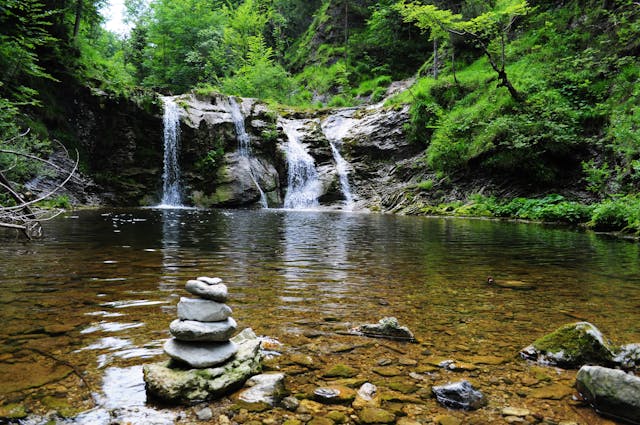
How do animals find water? They have many methods. Some animals can smell or sense water. Some animals get their water through eating plants. Some animals have evolved to need less water or to store water. Some animals can drink water that we couldn’t. Many animals instinctively know what signs to look for to find water.
When we look for life on other planets, we generally look for planets that have water because all living things on Earth need water to carry out chemical reactions. At least, that is how it is here on Earth. Other beings might have evolved methods that don’t need water but every living thing on Earth needs water to survive.
I am lucky in that I have access to instant, clean water. 2 billion people on Earth don’t have access to clean water. SDG number 6 is clean water and sanitation for all. We have the economic systems and the ability to give clean water to everybody on Earth should we choose to, we just don’t. However, animals can’t set up infrastructure like that. So, how do animals find water?
The easiest way is that animals tend to increase near consistent water sources. If there is a ready supply of water, the species that lives there will find it easy to live and they will increase. Species that don’t live near a water source will have more difficulty and they will probably decrease. This means new generations don’t have trouble finding water because they are born near a water source. But what happens if the water source runs out? Or if animals are forced to move because their habitat is changed or destroyed? How do they find water then?
Some animals have evolved to survive without much water. Animals that live in deserts have had to adapt to survive and the animals that can go the longest without water do the best in these dry environments. Deserts do have water, they just don’t have a lot of it or a regular supply. Many reptiles and other cold-blooded animals don’t need much water. All living things need water for chemical reactions, so cold-blooded animals have slowed down their metabolism to reduce the number of chemical reactions they have. This is also why reptiles can go for long periods of time without eating. Reptiles are also able to extract water from any animals they kill and their scales are shaped to catch any morning dew and funnel it towards their mouths.
Other desert animals have evolved ways to store water. Camels are a good example of this. Many people (including me before I found this out) think that camels store water in their humps, but they actually store the water in their blood. Camels can go for a long period without drinking, then they can drink a huge amount. A camel can drink 200 liters of water in 3 minutes, which then stays in the camel’s blood to be used.
A lot of small animals get their water from the plants and grasses they eat without needing any source of standing water. Many plants contain a lot of water, which the animals that eat them can access. They also collect dew in the mornings, which the animals can also get when they eat the plant.
A lot of animals instinctively know where to look to find water. We have some of this knowledge as well. If you are lost in a desert and you see lots of trees and birds and animals in the distance, you can be pretty sure it is either a mirage or a source of water. Animals know this as well. Birds have the advantage that they can see the water from the sky and fly to it.
A lot of animals can drink water that we wouldn’t be able to stomach. Deer are able to drink salty water and brackish water without any problem. Many cats can also drink saltwater, although they would rather not. They are able to remove the salt from their blood and produce a concentrated urine. However, many animals do get parasites from drinking dirty water.
And lastly, many animals can smell water. Well, actually, that isn’t true. Water is odorless. There is nothing on Earth that can smell water. However, it is possible to smell something that has water on or in it. We can smell the difference between wet sand and dry sand, or wet earth and dry earth. You can smell when it rains. You can smell damp clothes and you can smell the trees and plants that are near the water source. We are not smelling the water itself. And this is what humans are able to do. Many animals have a far superior sense of smell to ours and they can smell these things far more easily than we can. Most animals already know where a water source is and they probably don’t stray too far from one, but, if they do, they can probably detect where the water is. And this is what I learned today.
Photo by Manuela Adler: https://www.pexels.com/photo/body-of-water-across-forest-949194/
Sources
https://science.howstuffworks.com/life/evolution/humans-smell-fresh-water-evolution.htm
https://www.wtamu.edu/~cbaird/sq/2013/09/18/how-much-water-can-a-camel-store-in-its-hump/
https://www.usgs.gov/special-topics/water-science-school/science/water-you-water-and-human-body
